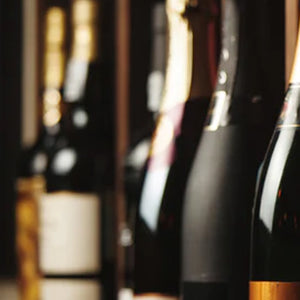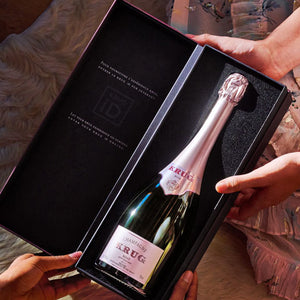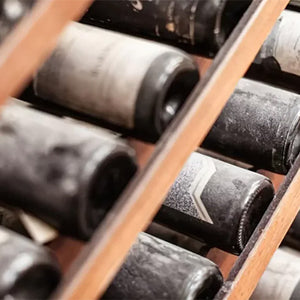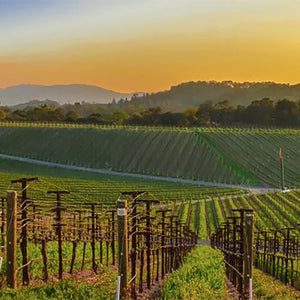
Everything You Need to Know About Bordeaux
Thanks to the region’s optimal location and climate, as well as the many talented producers that call the region home, it’s no surprise that Bordeaux has long been deemed one of the most prestigious growing regions in the world. Curious to learn more about this versatile area? We’re breaking down everything you need to know about the area and its wines here.
Quick Bordeaux Facts
- 6,000+ wineries
- 120,000 hectares of vines
- 25% of France’s AOC-designated vineyards
- Accounts for 15% of France’s annual wine production
A Bit of Regional History
Bordeaux’s rich viticultural history dates back to the 1st century, when the Romans introduced wine (and winemaking) to the locals. The popularity of regional wines skyrocketed during the 12th century, when England’s Henry Plantagenet married Eleanor of Aquitaine, as this marked the beginning of Bordeaux wines’ export to England. The region’s red wines, referred to in England as claret, were an immediate hit. A few centuries later, Dutch traders helped revive the grounds of Médoc to expand the region’s viticultural potential, as claret production had long been centered around Graves. At this time, Malbec was the more preferred grape variety, though this shifted to Cabernet Sauvignon around the 19th century.
In 1855, the Classification of Bordeaux Wines earned the region global recognition for the quality of wine being produced within the region. However, two decades later, phylloxera ravaged the region (as it did most of Europe). The region’s vines were grafted with American rootstock and quickly bounced back. Today, Bordeaux is home to over 120,000 hectares of vineyards. The region produces over 700 million bottles of wine annually, ranging from daily drinkers to world-renowned collector items. There are currently 54 appellations within Bordeaux.
Where Is Bordeaux?
The Bordeaux wine region is located in southwest France, centered around the city of Bordeaux. It is located along the Dordogne, Garonne, and Gironde rivers, which help moderate the region’s overall climate conditions.
What Is the 1855 Bordeaux Classification?
The 1855 Bordeaux Classification was a direct result of the Exposition Universelle de Paris. Seeking to delineate the region’s best wines, Napoleon III requested the creation of a classification system based on the quality of a château’s wines. Bordeaux’s top châteaux were organized based on merit and quality from first to fifth growths.
What Are First Growth Estates?
There are five First Growth estates in Bordeaux. These are the top châteaux that garnered the highest ranking from the 1855 Classification system. All of the estates are located on Bordeaux’s Left Bank, and four of the five are found in the Médoc. They are Château Lafite Rothschild, Château Haut-Brion, Château Latour, Château Margaux, and Château Mouton Rothschild, the last of which was added in 1973.
What Is the Difference Between Left Bank and Right Bank?
Bordeaux’s two main wine regions, the Left Bank and the Right Bank, are separated by the Gironde estuary. The Left Bank of Bordeaux is home to all five of the region’s First Growth estates. Here, Cabernet Sauvignon reigns king, as it thrives in the region’s gravelly soils. The Right Bank, on the other hand, is known for Merlot-dominant blends, as the soils here are more clay-based. Wines from both Banks have their positive sides; while Left Bank wines are more rustic and often boast longer life spans in the cellar, Right Bank wines tend to be silkier, smoother, and more approachable in their youth.
What Are the Other Subregions of Bordeaux?
In addition to Bordeaux’s Left and Right Banks, the region is also home to the Entre-Deux-Mers region, which lies between the two. Bordeaux is also highly regarded for its Sauternes and Barsac areas, which are known for their world-class sweet wines.
What Is the Terroir of Bordeaux?
The terroir of Bordeaux is greatly varied, which is why the region is home to so many renowned styles of wine. The Left Bank’s soils are more gravel rich, whereas the Right Bank boasts more gravelly soils. Sauternes’ soils are a combination of limestone and gravel, and Entre-Deux-Mers are a clay-limestone hybrid. Overall, Bordeaux experiences an oceanic climate, dominated by warm summer days and mild, rainy winters.
Which Grape Varieties Are Grown in Bordeaux?
Cabernet Sauvignon and Merlot are the key red varieties, and blends are often rounded out with Cabernet Franc, Malbec, and Petit Verdot. In white and sweet wine production, Sauvignon Blanc, Sémillon, and Muscadelle are the region’s key players.
Who Are Some of Our Somm Team’s Go-To Bordeaux Producers?




